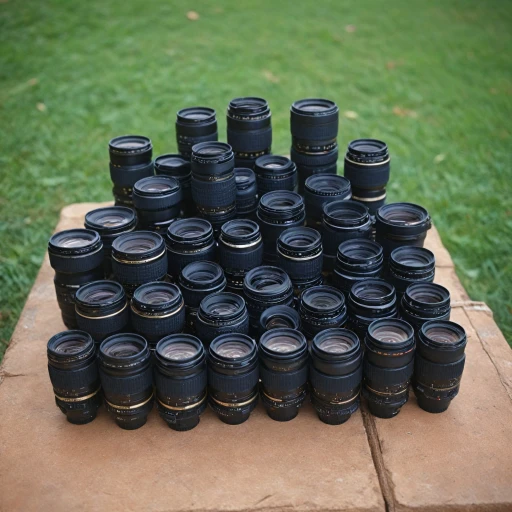
Understanding Focal Reducers
Decoding the Purpose and Function of Focal Reducers
Focal reducers, such as the GSO 0.75x Focal Reducer, are pivotal tools in the realm of astrophotography and telescope setups. At their core, these devices are used to shorten the focal length of an optical system. By reducing the focal length, they widen the field of view, which can be a game-changer for photographers and astronomers seeking to capture expansive celestial landscapes. This reduction in focal length translates to a number of benefits. More than just a tool for expanding your spectrums, focal reducers also affect the image brightness, often leading to faster exposure times in astrophotography. This is because the reduction factor of focal reducers allows more light to reach the camera sensor, an essential quality for those shooting in low-light conditions. Focal reducers are often used in conjunction with telescopes and cameras, connecting via threads and adapters to ensure a seamless transition of optics between devices. The GSO 0.75x, for instance, is designed to snugly fit into various telescope mounts with its compatible connection threads and adapters, ensuring a stable and secure attachment. The utility of a reducer is best appreciated by observing its impact on the effective aperture and field flatness. By influencing the optics' length, a focal reducer like the GSO is able to transform a narrow field view into a wide, majestic scene with minimal distortion, a constant aspiration for astrophotographers. For enthusiasts desiring to understand the full scope of their telescope's potential, incorporating a focal reducer could provide the leverage needed to elevate their craft. It's a tactical choice that can also adapt to various filtration needs, with filter threads allowing the addition of specific filters that aid in contrast and spectrum enhancement, further refining the observations and photographs one can capture. Exploring the versatility of focal reducers can significantly enhance your photography journey, particularly for those aligning their gear towards astrophotography or wide-field nature shoots. If you're searching for the right canonical gear to bolster your photographic ventures, consider exploring this guide on choosing the best Canon lens for wildlife photography.The Benefits of Using a GSO 0.75x Focal Reducer
Enhance Your Imaging with a Quality Focal Reducer
When considering the complexities of modern astrophotography, a focal reducer can be an invaluable tool to add to your kit. Understanding its benefits could dramatically elevate your photographic pursuits, especially if you're keen on wide-field imaging. The GSO 0.75x focal reducer offers features that stand out in comparison to others on the market, providing that much-needed advantage for telescope-captured images.
Firstly, the enhancement begins with its capability to broaden your field of view, allowing you to capture more of the celestial tapestry in a single frame. This can be particularly advantageous when photographing sprawling nebulae or wide star clusters.
Secondly, using the GSO reducer can significantly decrease the exposure time required to capture high-quality images. Shorter exposure times mean you can avoid some of the potential pitfalls of extended exposures, such as star trails due to Earth’s rotation.
The reducer also doubles as a corrector, adeptly minimizing optical flaws like coma that might otherwise degrade image quality. The improved image sharpness across the frame makes it superior in reducing distortion, thereby ensuring that stars remain pinpoint — an essential for those seeking clarity and detail.
Another often-overlooked advantage of this focal reducer is its seamless compatibility with camera filters. With a suitable filter thread, you can easily attach it to various filters without cumbersome setups. It provides flexibility, whether you’re using a sky watcher or a ZWO, enhancing the camera-side image quality, thus resulting in the intriguing mix of colors often lost when capturing the night sky without a filter.
For enthusiasts keen on using full-frame cameras, this reducer boasts an efficient working distance, providing exceptional performance even on a camera with a considerably larger sensor. Whether pairing it with your APO telescope or an APM Riccardi system, the GSO reducer ensures excellent adaptability with its connection thread options, making it a worthy investment for any astrophotographer.
Learn more about lenses and accessories that can further revolutionize your photography journey by exploring the benefits of using a fish-eye lens.
Compatibility with Digital Cameras
Integrating the GSO 0.75x with Your Camera Setup
When considering the integration of the GSO 0.75x Focal Reducer with your digital camera setup, compatibility is key. This reducer is designed to work seamlessly with a variety of telescope systems, making it a versatile option for astrophotographers looking to enhance their equipment. Firstly, it's crucial to determine whether your camera is compatible with this reducer. The GSO 0.75x is particularly effective in reducing the focal length, making it ideal for those using digital cameras with a shorter focal length requirement. Its connection thread fits most standard telescope setups, simplifying the process of linking the reducer to your camera. When dealing with various types of cameras, ensure that you have the appropriate optics adapter or focal reducer adapter. These adapters serve as a reliable link between the reducer and your camera, allowing for a seamless connection without causing misalignment that could affect image quality. Moreover, check if your setup requires a specific working distance. The GSO reducer operates optimally within a certain range, and adapting your equipment accordingly ensures high-quality results. If you're using full frame digital cameras, be mindful of the fact that not all focal reducers are full frame compatible. However, the GSO 0.75x often meets the necessary criteria for these types of cameras, providing both coverage and clarity. Finally, for those using advanced setups with additional components such as a filter thread or coma corrector, verify whether these can be integrated without inhibiting the reducer's performance. Some astrophotography enthusiasts find that the addition of a sky watcher or a filter thread can significantly enhance their final images, making the GSO 0.75x an invaluable tool in such scenarios. For photographers transitioning from regular photography to more specialized fields like astrophotography, ensuring compatibility with your current gear is vital. Investing in a high-quality tripod is equally important for those embarking on this journey, providing the stability required for capturing stellar images. To explore options further, you might want to consider this resource on finding the ideal tripod for beginners to complement your GSO 0.75x Focal Reducer setup.Installation and Setup Tips
Proper Installation and Setup Guide
To optimize the performance of your GSO 0.75x focal reducer, ensuring proper installation and setup is crucial. The following guidelines will help you connect your focal reducer accurately to your digital camera and telescope.- Select Appropriate Connections: Ensure compatibility between the reducer and your telescope by confirming the connection thread type. Telescope adapters need to match the female thread of the focal reducer. Utilize a proper optics adapter if needed, as it ensures a stable connection telescope setup.
- Consider Filter Integration: If using filters alongside your setup, check the filter thread compatibility. This step is vital for maintaining image quality when the focal reducer is in use.
- Check Working Distance: Ensure the working distance between the reducer and camera sensor is optimal. Working distance affects the performance of the reducer flattener, impacting image quality and the focal factor.
- Secure Mount: Use a solid camera side connection. This will minimize any potential shifts or vibrations that might occur during imaging.
- Perform Tests: Once assembled, conduct tests to observe any unexpected image shifts or factors like aberration or coma. Adjust the setup accordingly to address any minor issues encountered.
- Refer to Manufacturer Instructions: Always consult the manufacturer-provided guidelines to facilitate a correct setup, accounting for specific apo reducer or corrector requirements.
Real-World Applications and Use Cases
Practical Uses for the GSO 0.75x Focal Reducer in Photography
When it comes to employing a GSO 0.75x Focal Reducer in real-world scenarios, photographers and astronomers alike will find it offers unique advantages. This versatile reducer is designed connecting the telescope and camera, reducing the focal length to expand the field of view, making it especially valuable for various photographic endeavors. Here are some practical applications:- Astrophotography: The GSO 0.75x reducer is perfect for capturing expansive celestial scenes. It minimizes field curvature and enhances image clarity. By integrating it with telescopes like those from Sky Watcher, users can vastly improve image sharpness and accommodate a full frame camera effectively.
- Wide-Field Imaging: With the reducer decreasing the focal length, photographers can capture broader areas of the sky or landscapes. This is essential for genres such as nature or landscape photography, where capturing more of the scene can lead to stunning visual compositions.
- Balancing Image Quality: By utilizing the reducer, any inherent field curvature or coma in your telescope might be reduced, due to its optical corrector capabilities. The optics adapter helps in maintaining overall image consistency, crucial for professionals aiming for quality output.
- Compatibility with APM and Riccardi Systems: For users with APM Riccardi apo systems, this focal reducer integrates seamlessly, thanks to its adaptable connection thread and working distance capabilities, delivering high-quality optics.
Comparing Focal Reducers: Why Choose GSO?
A Closer Look: Why Opt for GSO Focal Reducers
When considering focal reducers, photographers and astronomers alike may wonder why they should choose a GSO 0.75x focal reducer over other options. The decision often boils down to specific factors that are critical for optimizing your imaging experience.- Superior Optics Quality: GSO focal reducers are renowned for their high-quality optics. This is crucial for achieving sharp and clear images, whether you're capturing distant galaxies or details of the terrestrial landscape. The precise engineering ensures minimal optical distortion, meeting the expectations of both amateur and professional users.
- Compatibility with a Range of Telescopes: One of the standout features of GSO focal reducers is their compatibility with a wide array of telescope models and sizes. This versatility is a bonus for users owning different types of equipment, including those using APM or Riccardi telescopes. The focal reducer fits seamlessly and enhances the optical performance across the board.
- Robust Construction and Design: Constructed with durable materials, GSO reducers are built to withstand frequent use while minimizing issues like misalignment. The connection thread design also facilitates a secure and simple attachment to various adapters, making setup a breeze.
- Affordable Yet Efficient: Despite its competitive pricing, GSO maintains a high standard of optical performance compared to more expensive models. This makes it an attractive choice for those looking to improve their photography without a massive financial outlay.
- Impressive Performance with Full Frame Cameras: When paired with full frame cameras, these reducers do a fine job in reducing the focal length and improving the field of view. The performance remains consistent across different frame sizes, which proves beneficial for those keen on maintaining clarity and detail.
- Effective Corrector and Flattener Properties: An integrated coma corrector feature helps maintain image quality by addressing image curve distortion, which is particularly useful for astrophotography. Additionally, the reducer flattener capability enhances field flatness, thus reducing curvature for improved image frames.












